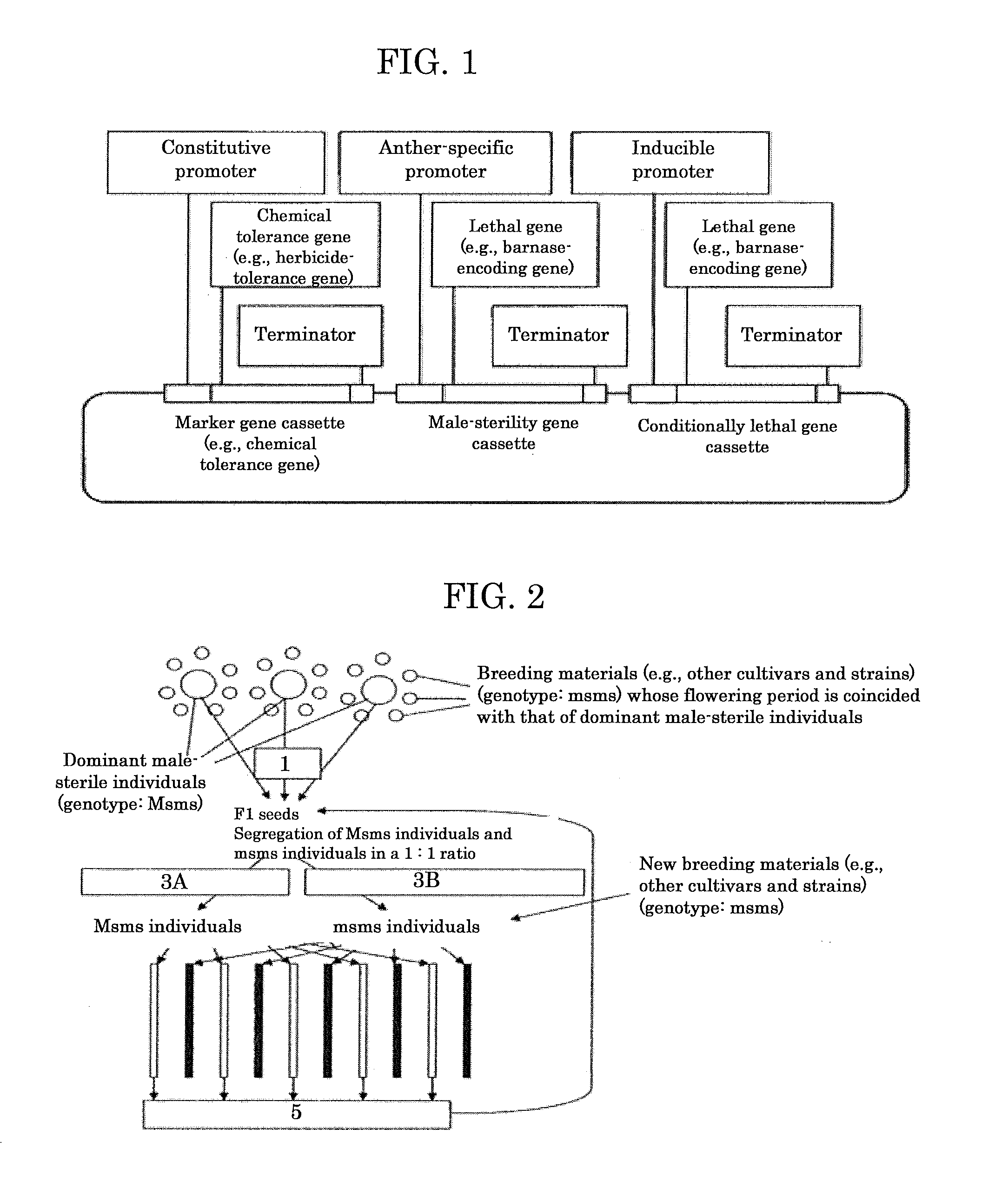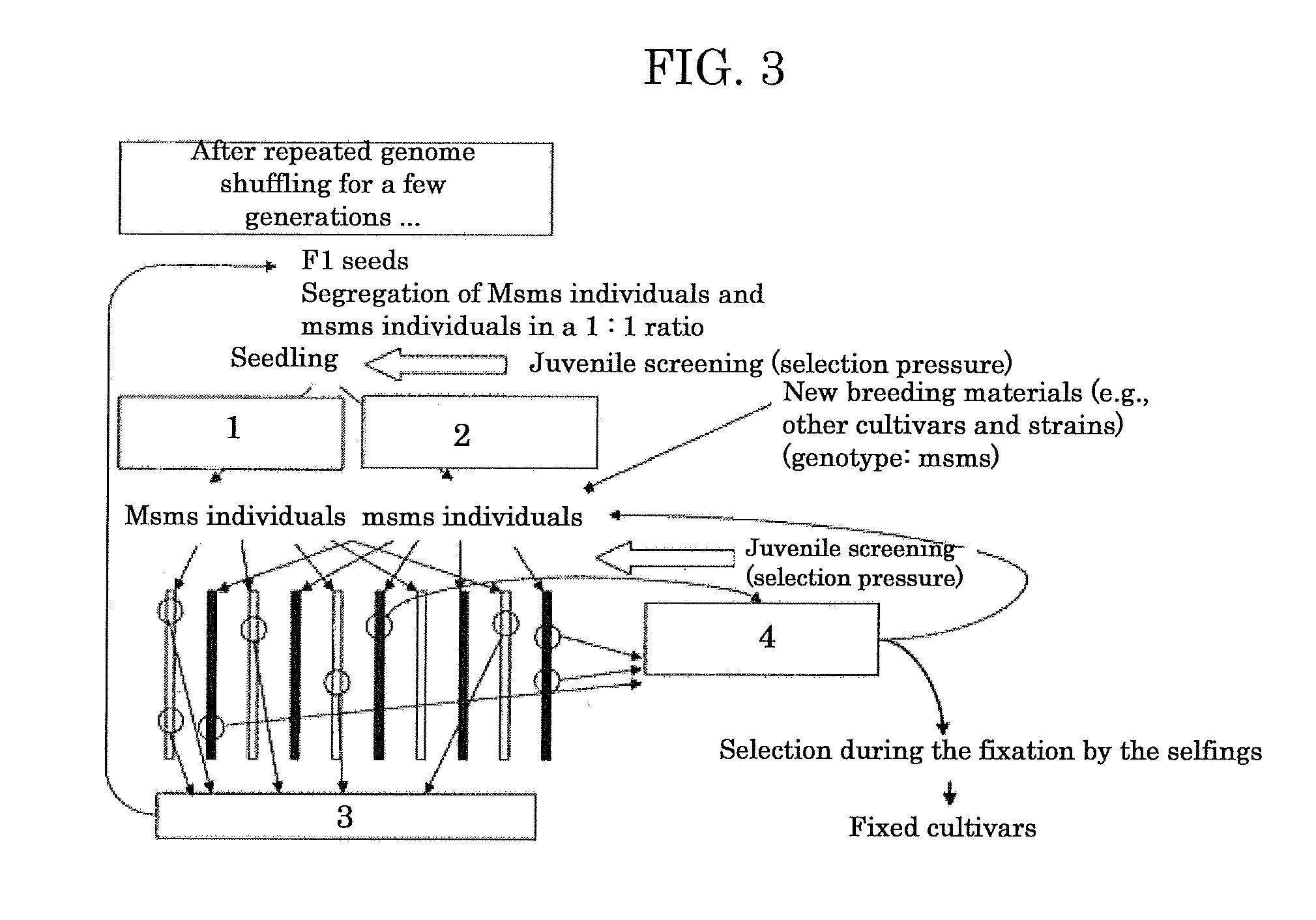Genome shuffling method for autogamous plants utilizing dominant male sterility obtained by gene engineering technique, and recurrent selection breeding system based on the genome shuffling method
a gene engineering and autogamous technology, applied in the field of genome shuffling method for autogamous plants utilizing dominant male sterility obtained by gene engineering technique, can solve the problems of imposing limitation on the breeding of autogamous plants, unable to be a universal method, and difficult to use msfrs method, etc., to achieve efficient outcrossing and difficult outcrossing
- Summary
- Abstract
- Description
- Claims
- Application Information
AI Technical Summary
Benefits of technology
Problems solved by technology
Method used
Image
Examples
Embodiment Construction
One feature of the present invention to solve the above existing problems is to utilize dominant male sterility obtained by a gene engineering technique such as a transgenic technique and a gene targeting technique. Specifically, a vector having the following three gene cassettes as a single construct is used for transformation by a gene engineering technique such as a transgenic technique and a gene targeting technique:
1) a male-sterility gene cassette including an anther-specific promoter and a lethal gene such as a ribonuclease-encoding gene driven by the anther-specific promoter,
2) a chemical tolerance gene cassette including a constitutive promoter and a chemical tolerance gene driven by the constitutive promoter, which allows expression of genes in stems and leaves, and
3) a conditionally lethal gene cassette including an inducible promoter and a lethal gene such as a ribonuclease-encoding gene driven by the inducible promoter, to thereby produce individuals possessing the foll...
PUM
| Property | Measurement | Unit |
|---|---|---|
| chemical tolerance | aaaaa | aaaaa |
| pressure | aaaaa | aaaaa |
Abstract
Description
Claims
Application Information
 Login to View More
Login to View More - R&D
- Intellectual Property
- Life Sciences
- Materials
- Tech Scout
- Unparalleled Data Quality
- Higher Quality Content
- 60% Fewer Hallucinations
Browse by: Latest US Patents, China's latest patents, Technical Efficacy Thesaurus, Application Domain, Technology Topic, Popular Technical Reports.
© 2025 PatSnap. All rights reserved.Legal|Privacy policy|Modern Slavery Act Transparency Statement|Sitemap|About US| Contact US: help@patsnap.com


